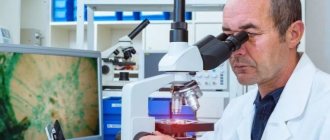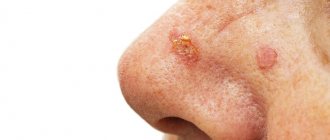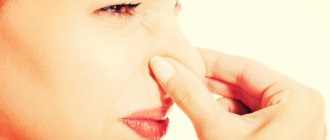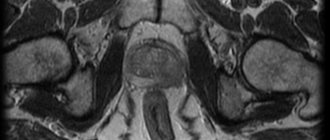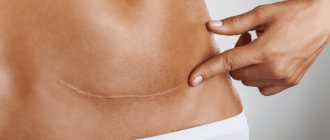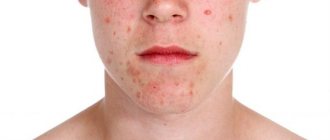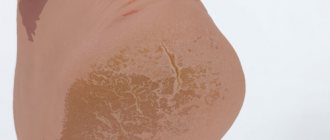Verrucas, verrucae or plantar warts are small lesions, rough warts or growths that are usually found on certain areas of the legs - the heels and areas of the feet that experience pressure when walking.
Verrucas can go away on their own, but often require treatment, especially if they cause unpleasant symptoms. According to statistics, about half of such warts disappear within one year, two thirds after two years, and the rest are resistant to immunity and therapy, and therefore persist until removal.
Spread of infection
Such warts are usually transmitted through personal contact. Common methods of spread are through common bathing areas. The infection enters the skin if it is damaged - cut, scratched, abraded or ulcerated in any way.
Infection can also occur if there are scratches, damage from nail treatments and shaving. This leads to the spread of the virus and the formation of warts in different parts of the body in the same person.
Treatment of toenails
Types and reasons
Warts are:
There are a lot of varieties of warts; they are classified according to a number of characteristics:
- Simple. They occur on exposed parts of the body, arms, legs, face, and scalp. They are usually not dangerous, but they are not aesthetically pleasing and can multiply quickly, affecting large areas of the skin. They are arranged as if in “families”.
- Plantar. Their localization is exclusively on the feet. Causes discomfort when walking.
The main cause is infection with the human papillomavirus, which affects the mucous membranes and skin.
Symptoms and signs
Most people with plantar warts complain of pain when walking. Pain in the feet can lead to altered walking posture, which over time causes back pain.
Foot pain
The disease is not inherited, but since HPV is very contagious, several family members usually consult a dermatologist at once.
People with eczema, low immunity, diabetes, AIDS, organ transplant recipients, those taking immunosuppressants, as well as patients with leukemia and lymphomas are especially susceptible to infection. About 50% of people who have a kidney transplant develop warts within five years.
Plantar warts feel hard to the touch and are located in pressure areas such as the heels or soles of the feet. The pressure causes them to flatten. Several warts may be combined into a mosaic group.
In what cases is tumor removal prescribed?
Experts recommend seeking help if there are indications:
- pain when wearing tight shoes or walking for a long time;
- bleeding in the affected area;
- uneven coloring of the neoplasm;
- rapid growth, association of individual lesions into masses.
If you still have doubts about whether it is worth removing the tumors, seek the advice of a specialist.
Treatment of plantar warts
If such a wart does not bother you - it does not hurt or cause injury - you can wait for removal; the dermatologist will prescribe symptomatic drug therapy. In such patients, measures to prevent relapse and spread are recommended. People with depressed immunity, painful warts, and persistent warts that have not gone away for more than 2 years are prescribed removal of the tumor. It is also possible to remove a plantar wart for cosmetic purposes.
Preparations used for topical treatment contain salicylic acid, formaldehyde and glutaraldehyde. Removal is carried out using cryotherapy - freezing. Complex tumors are removed with a laser. As a preventative measure, injections with interferon, 5-fluorouracil, bleomycin, etc. can be prescribed.
Cryotherapy
Human papillomavirus
This is one of the most common viruses on Earth. Infection can occur in several ways:
- contact and household (through touch);
- sexual (genital, anal, oral-genital);
- in childbirth from mother to child.
The period of development of the disease ranges from several weeks to tens of years, this is explained by the fact that the virus may not manifest itself for a long time, but as soon as the immunity becomes a little weaker, growths immediately appear on the skin and/or mucous membranes. The main danger of this disease is that certain types of HPV are highly likely to cause the formation of a malignant tumor (cancer of the skin or mucous membranes). To make sure that the disease will not lead to the formation of a tumor, it is necessary to undergo examination by a doctor and not self-medicate.
Prevention of plantar warts
Patients visiting swimming pools, beaches, public showers are recommended to wear special rubber slippers. Socks, sponges, pumice stones and towels should not be shared. Any scratches on the legs should be healed immediately.
ONLINE REGISTRATION at the DIANA clinic
You can sign up by calling the toll-free phone number 8-800-707-15-60 or filling out the contact form. In this case, we will contact you ourselves.
If you find an error, please select a piece of text and press Ctrl+Enter
Methods
There are several methods for removing spines. They all boil down to the destruction of the wart, but this is achieved through various methods of influence, which can be divided into three groups:
- Destruction (destruction using laser, radio waves, electrocoagulation)
- Chemical destruction using various substances (liquid nitrogen, salicylic acid, alkalis, etc.)
- Surgical excision
Let's take a closer look at these methods
Destruction methods are the most effective, because they destroy the wart completely and with high precision. The radio wave method should be considered the most optimal. It involves the most gentle and at the same time deep removal of the spine. During laser removal, the depth of penetration may not be sufficient to destroy the “roots” of the wart, which can lead to recurrence. When removed with an electrocoagulator, excessive damage to surrounding tissue occurs, which leads to longer wound healing and the formation of a rougher scar.
Chemical destruction is not very effective in treating plantar warts, but is more suitable for removing small papillomas on other parts of the body (i.e. those small formations that rise above the surface of the skin). Plantar warts are located almost flush with the skin and spread quite deeply inward. Therefore, the effect of a chemical on them is either not enough to completely destroy the wart, or, on the contrary, it is too extensive and causes chemical burns of the surrounding tissues, sometimes with the formation of long-term non-healing ulcers.
Surgical excision is rarely used for two reasons: firstly, extensive excision involving healthy tissue is simply not necessary and unreasonably increases the volume and invasiveness of the intervention. Secondly, the plantar surface of the foot is subject to constant mechanical stress (plus sweat production, limited “ventilation” of the wound due to shoes). All this greatly increases the risk of suppuration under the sutures. Surgical removal is advisable in cases where the wart is suspicious of a malignant formation and a high-quality histological (under a microscope) examination of the removed material is required.
What do warts on the foot look like?
Not all growths on the soles are identical. Therefore, sometimes patients confuse warts with other growths and this interferes with effective treatment.
Fortunately, the signs of viral foot warts are easy to remember:
- Small, hard lumps, usually at the base of the toes or on the heel
- Dark spots on the skin are superficial vessels overflowing with blood
- Rough, hardened skin around a noticeable spot that causes the wart to grow deeper into the leg
These formations are also characterized by other symptoms. For example, they cause pain and irritation when walking, which often causes changes in gait. This is how the body fights the unpleasant sensations of warts. Sometimes patients themselves do not notice these changes.
It is recommended to remove such growths.
How does the removal itself take place?
At the appointment, the doctor clarifies complaints, the duration of the disease, conducts an examination, and clarifies the presence of concomitant diseases and allergies to medications.
If the diagnosis is confirmed and there are no contraindications, intervention is performed. After treating the skin with an antiseptic, local anesthesia is administered with a thin needle. This may cause some pain (like any injection), but then the removal itself is completely painless. After making sure that the anesthetic has worked, the doctor destroys the wart with a radio wave scalpel. After removal, the wound is treated with fucorcin and a bandage is applied. The entire intervention takes 2–3 minutes.
Wart removal methods
Warts are neoplasms that in most cases do not harm the human body, but affect its aesthetics. Their size can vary from 1 mm to 1 cm. The larger they become, the more discomfort they cause. Currently, there are many proven and safe methods for removing warts that allow you to get rid of a cosmetic defect. Among them:
- Radio wave method. Here, the growth is exposed to high-frequency radio waves, which contributes to the destruction and killing of pathological cells. Despite its high efficiency, the method has one drawback: after the manipulation, a blister remains, the healing of which takes a lot of time.
- Cryodestruction. The method involves exposing the neoplasm to liquid nitrogen. In the process, an epithelial bubble is formed, which causes pain. The wart dies along with the blister, and after it is rejected by the body, the treated area is overgrown with healthy young skin.
- Ultrasonic method. In its effect, this technique is similar to the radio wave method, only here the radio waves are replaced by high-frequency sound. This method is considered one of the most effective and painless.
- Surgical method. One of the most radical techniques is used only in emergency situations. These include the process of degeneration of a wart into melanoma or the beginning of the death of surrounding tissues.
- Laser method. The technique is based on laser exposure. This is the most modern technology, after which only a small scar or shallow hole remains, healing within several months.
What precautions does the wound require after laser removal of a wart?
To prevent a scar or a scar after removing a wart with a laser, you should follow the recommendations listed below:
- Do not cover the wound with a band-aid to prevent inflammation due to the penetration of bacteria. The wound will heal faster if there is constant access to air. Over time, the crust will fall off, and in its place a new layer of epithelium will form.
- After removing the wart, treat the wound with brilliant green, healing ointments, potassium permanganate solution and other local disinfectants for three days. Chemicals and alcohol solutions are strictly prohibited.
- Even if you accidentally scratched the wart removal site and the scab began to separate prematurely, do not completely rip it off. Take the furatsilin solution, soak the separated area with it and carefully cut it off.
- The crust that has formed on the wound cannot be removed; it will fall off on its own.
- Avoid exposing the wound to sunlight; use sunscreen before going outside.
- If a wart has been removed in the intimate area, you can have sex only after the wound has completely healed. As a rule, this is one month.
- It is better not to use cosmetics until the color of the skin on the wound evens out with the surrounding tissues.
- If a month has passed since the wart was removed with a laser, and the wound has not healed, go to the doctor.
- After the procedure, it is recommended to take a course of vitamins E, A, C to make the skin more elastic, strengthen the immune system and restore the regenerative properties of the skin.
Read material on the topic: Dermatological facial cleansing: types, reviews and prices
What to choose: laser or nitrogen removal of warts
The most popular methods for removing warts and other unwanted growths are laser and cryodestruction. If a person decides to remove the tumor, he needs to choose a method.
If the wart is in a visible place, such as on the face, then it is better to choose laser because it does not leave scars.
Nitrogen does not penetrate into the deep layers of the skin, so if you choose cryodestruction, there is a high probability that several procedures will be needed, especially if the tumor is large. Cryodestruction is cheaper than laser, but causes pain.
If you decide to undergo the procedure, consult a dermatologist about which method of wart removal to choose. Laser is more effective, but also more expensive. Cryodestruction is more affordable, but most likely it will take several sessions to completely get rid of the wart.
Treatment and prevention
Independently getting rid of any tumors is not encouraged by doctors due to the high risks of infection and complications. In addition, chemical burning of warts or cutting them off leaves rough scars on the skin.
The Surgitron device shows much greater efficiency and safety:
- reliable removal of all types of warts on the legs and other parts of the body;
- the possibility of infection is excluded, since damaged vessels coagulate immediately;
- use of local anesthesia;
- The procedure takes place on an outpatient basis and does not require much time.
With the help of a radio knife, you can get rid of warty growths without a trace and restore lightness to your gait and beauty to your skin without scars. To prevent reactivation of the virus, you should maintain the body’s defenses, observe personal hygiene rules, and do not forget to wear individual shoes in public pools.
Removal of warts by cryodestruction (liquid nitrogen)
Cryodestruction is a modern method of treating superficial benign neoplasms, in which pathological tissues are first cooled to an extremely low temperature and then destroyed. Liquid nitrogen is used as the active substance. It is under its influence that benign growths die, and cells with a disturbed structure slow down their growth.
Cryodestruction of warts and other neoplasms includes the following stages:
- Exposure to liquid nitrogen. The doctor's main instrument is a wooden stick with cotton wool or gauze wound at one end. With its help, liquid nitrogen is removed from the container and applied to the growth. After this, the doctor presses the stick onto the wart and holds it for 5-30 seconds.
- Break for 1-2 minutes. A pause is needed to assess the effectiveness of the impact. First, the skin turns white, then thaws, which allows the doctor to determine the magnitude and depth of exposure to the substance. Based on this, he decides whether to repeat the procedure or not.
- Result. After all exposures, the skin becomes whitish-pink, which indicates the complete killing of pathological cells.
The next day after the procedure, a bubble filled with colorless or reddish liquid appears on the treated area. The color of the liquid is affected by the depth of exposure. The blister cannot be covered with adhesive tape. If necessary, it can be covered with a gauze napkin, and then secured with an adhesive plaster. During water procedures, it is important to maintain the integrity of the bladder. If the treated area causes pain, you may take a painkiller.
Sometimes warts do not respond immediately to liquid nitrogen. Therefore, if necessary, 3 weeks after the first correction, the doctor repeats the procedure. Usually two sessions are enough.
Warts are skin growths, mostly benign, caused by different types of human papillomavirus (HPV).
HPV, getting on the skin or mucous membrane, penetrates the cell and penetrates into the nucleus, where it can remain inactive for a long time. Under conditions leading to immunosuppression, the virus begins to multiply in the nucleus, causing proliferation of epithelial tissue.
At present, it is obviously impossible to achieve a complete cure for HPV infection through monotherapy. However, the therapeutic methods of modern medicine make it possible to inactivate the virus and achieve stable long-term remission [1].
Methods that reliably ensure the removal of warts are the external use of drugs based on salicylic acid (possibly used at home) and cryotherapy prescribed by a doctor. Injection immunotherapy in the treatment of nongenital common (vulgar) warts can be used on large warts that are difficult to treat with other means (Table 1).
Warts occur in 10% of children and adolescents. The age group 12-16 years old is at greatest risk. Girls get warts more often than boys. The peak incidence occurs at 13 years in girls and 14.5 years in boys [4].
It has been established that without special treatment, warts disappear after 2 years in 40% of children [5]. They usually continue to increase in size and may become more resistant to treatment over time [6]. Children with treatment-resistant warts can become active carriers of HPV. In addition, depending on the location, warts can be painful (for example, if they are located on the sole or periungual fold), and can also be perceived as an obstacle to communication if the warts are located on visible areas (for example, the hands or face) [7].
Treatment approaches
Currently, there are different approaches to treating warts, including observation and a combination of several methods to increase effectiveness. The choice of treatment method should be made on a case-by-case basis based on the physician's experience, patient preference, and application of an evidence-based approach. In immunocompromised patients who complain of warts, treatment may not lead to significant improvement, and the warts may be resistant to the drugs used. The two most common methods for removing warts are the use of salicylic acid and liquid nitrogen cryotherapy [8].
Salicylic acid preparations
The Cochrane Central Register of Controlled Trials assessed that topical salicylic acid is a safe and effective treatment for wart removal [8]. In addition, according to the report, there is no information to support the superiority of other methods in terms of treatment effectiveness or fewer side effects. Pooled data from 6 randomized controlled trials indicate a 75% effectiveness of treatment in patients using salicylic acid preparations, compared with 48% in the control group [8]. The manual by J. Sterling et al. [7] Salicylic acid has been named the drug of choice for the treatment of flat warts on the face, plantar warts, and flat and common warts on the hands.
Currently, there are various salicylic acid-based products on the market. Over-the-counter medications contain less than 20% salicylic acid, while prescription medications may contain up to 70% salicylic acid [9]. However, 15-20% salicylic acid is usually enough to cure a wart.
The effectiveness of treatment with salicylic acid preparations, according to various sources [10], is 40-84% (on average 61%). The therapeutic benefits of topical salicylic acid-containing products, both prescription and over-the-counter, are supported by randomized controlled trials [11–14]. The use of salicylic acid preparations is considered first-line therapy in the treatment of nongenital common warts (Table 2)
[9].
In the Russian pharmaceutical market, among over-the-counter drugs based on salicylic acid, Collomak
, produced in the form of a liquid varnish with a shaving brush lid.
Collomak
is a modern multicomponent drug that contains active ingredients: keratolytics - salicylic (20%) and lactic (5%) acids, emulsifier polidocanol 600 (2%), as well as special fillers that form the basis of the varnish dosage form - a film-forming substance ( ethylcellulose 5.5%), plasticizer (dibutyl phthalate 1%), solvents (acetone 6.65%).
The polidocanol component of Collomac
also causes sclerosis and obliteration of small veins and arteries at the site of application.
Collomak
applied to a wart or callus, after which the horny layers are easily removed.
If necessary, this treatment is carried out several times. To avoid damage to the surrounding skin when applying Collomac
, it is protected with indifferent zinc paste.
You can protect the surrounding skin with adhesive tape by cutting a hole in the middle. The duration of treatment is determined depending on the effectiveness of the drug. For adults, the maximum dose of Collomac
is 10 ml/day, which corresponds to 2 g of salicylic acid, for children - 1 ml, which corresponds to 0.2 g of salicylic acid.
It is not recommended to exceed the indicated dose and treat several areas of the skin and mucous membranes at the same time. During pregnancy, the use of Collomak
is permissible only when applied to a limited surface (no more than 5 cm).
When using the drug in the maximum daily dose in adults and children, the duration of treatment should not exceed 1 week. Positive experience with the use of Collomac
allows us to recommend this drug for widespread use in gynecological and dermatological practice in the treatment of warts and genital warts [1].
Cryotherapy
The effectiveness of cryotherapy treatment varies widely depending on the treatment regimen. As a rule, the wart is frozen for 10-30 seconds until a ring 1-2 mm thick forms around the frozen ball of the treated area. The maximum effectiveness of therapy is achieved when treated at intervals of 2-3 weeks. A positive result of therapy lasting more than 3 months is not documented [10, 11]. The best rate of effectiveness in the treatment of plantar warts was achieved when cutting off the hyperkeratotic surface and using two freezes with intermediate complete thawing [11, 13]. For common warts not located on the palms or soles, it is preferable to use one-time freezing [9]. One scientific report recommends the use of cryotherapy as first-line therapy for the treatment of flat and simple warts [7].
Cryotherapy is also offered as second-line therapy for flat and simple warts on the face [7]. A report by R. Brodell et al. [9] Cryotherapy is proposed as an effective treatment for simple and plantar (cutting with two freezing cycles) and flat warts. According to a report from the Cochrane Central Register of Controlled Trials [8], cryotherapy is not superior to topical medications for nongenital common warts.
Laser therapy
With the help of laser therapy, it is possible to influence the hemoglobin of red blood cells contained in the blood vessels of the wart. In this case, thermal energy is extrapolated to adjacent tissues, which leads to coagulation of blood vessels. As a result of the procedure, a necrotic area with a wart remains, which is easily rejected [15]. Studies examining the effectiveness of laser therapy after 2-3 sessions show a positive result in 48-83% of cases for warts located on different parts of the body [16, 17].
In addition to physical destruction, lasers have a toxic effect on HPV, but the recurrence rate for this method is quite high - 4-22% [18]. K. Robson et al. [19] in a prospective randomized study showed that the effectiveness of laser therapy and conservative treatment methods is comparable. The use of laser therapy is recommended as second-line therapy for plantar warts and third-line therapy for common and flat warts [9].
Immunomodulators and antiviral drugs
The main mechanism of action of drugs in this group (imiquimod, kagocel) is the ability to induce the production of late interferon (IFN; a mixture of α-IFN and β-IFN), which has high antiviral activity. For chronic viral infections, they are recommended to be prescribed simultaneously with external therapy.
J. Sterling et al. [7] do not consider the available information on the use of imiquimod to be sufficient to recommend this drug for the treatment of nongenital common warts.
Cytotoxic drugs
The mechanism of action of cytotoxic drugs (bleomycin, podophyllotoxin) is based on inhibition of DNA synthesis of cells and viruses. Cytotoxic drugs are an alternative treatment for warts that do not respond to other treatments or are difficult to remove surgically. The pain of treatment (especially with bleomycin) is the main limiting factor in the use of this method. Possible side effects include scar formation, pigmentation, nail damage, and Raynaud's phenomenon (bleomycin) [20].
According to the report of the Cochrane Central Register of Controlled Trials, there is no statistically significant evidence of the effectiveness of intralesional bleomycin in the treatment of non-genital common warts, and the available data cannot be generalized for analysis [8]. However, R. Brodell et al. [9] based on 4 randomized controlled trials and a number of case series studies provide evidence of the effectiveness of bleomycin and recommend it as third-line therapy for simple and plantar warts.
Retinoids
Systemic retinoids are used to treat warts due to their ability to influence keratinization processes, which speeds up wart removal [21].
J. Sterling et al. [7] provide compelling evidence for the effectiveness of topical retinoids in a prospective case series study and a limited number of trials of systemic retinoids. R. Brodell et al. [9], based on a series of case studies, recommend oral and topical retinoids as second-line therapy for the treatment of flat warts.
Injection immunotherapy
Injectable immunotherapy relies on the ability of the immune system to recognize specific viral and fungal antigens. A skin antigen test for Candida is commonly used. It is generally accepted that delayed-type hypersensitivity reactions caused by these antigens increase the immune system's ability to recognize and eliminate HPV. In a study by M. Clifton et al. [6] showed complete (100%) removal of warts in 47% of patients and 75–99% removal of warts in 13% of patients. In 34% of those participating in the study, complete removal of all warts distant from the injection site was noted. In 22% of study participants, the effectiveness of therapy was 75-99% for warts located at a considerable distance from the injection site. No cure of warts in distant areas was observed with the use of other drugs.
S. Johnson et al. [22] analyzed the removal of warts by administering Candida and mumps antigens and compared their effectiveness with that of cryotherapy. Complete removal of warts was achieved in 49% of cases in those treated with mumps immunotherapy and in 70% of cases in those treated with Candida antigen immunotherapy, while the same figure for cryotherapy was 42%. The most common side effect was itching at the injection site [6]. A flu-like condition lasting less than 24 hours and improving with non-steroidal anti-inflammatory drugs was also noted. The high therapeutic efficacy of injection immunotherapy indicates that it is a promising method for the treatment of warts, although it requires clinical trials and safety assessment. R. Brodell et al. [9] recommend injection immunotherapy as second-line therapy for plantar warts and third-line therapy for simple and flat warts.
Conclusion
The drugs of choice for external treatment of HPV are currently salicylic acid-based products. Modern combination drugs, such as Collomac
, allow you to increase the effectiveness of treatment using salicylic acid, while maintaining a high level of safety. In addition, it is important that such treatment is safe and inexpensive. Other methods can be used for individual intolerance to salicylates, as well as as part of combination therapy.
Surgical excision of a large plantar wart
Due to postoperative complications and a long recovery period, the traditional method of excision of warts is used extremely rarely. Despite this, this method is quite effective in combating large nevi. Also, surgical excision of growths is indicated in cases where other methods of combating papillomas cannot be used for certain reasons.
The operation is performed with a scalpel using local anesthesia. Since surrounding tissues are damaged during the intervention, there is a high risk of bleeding and inflammation of the postoperative wound. After the procedure, stitches and a bandage are applied to the wound. In order to minimize the risk of wound infection, the patient is prescribed antibacterial agents. Painkillers may also be prescribed to reduce pain.
How long does it take for a wart to heal after laser removal?
Removing a wart with a laser practically does not injure the skin, but in any case there is a burn that heals in three stages.
At the first stage , a scab is formed, that is, a crust that protects the wound from infection.
At the second stage, gradual healing of the wound under the crust occurs.
At the third stage , the scab is rejected and the skin is restored. Young skin, of course, will initially be lighter, that is, the site of the removed wart will be visible, but subsequently the color will become the same as that of nearby tissues.
To ensure that the wound does not become inflamed or fester after laser removal of a wart, you need to take care of it, so the healing process will go faster. The healing period depends on many factors, which are indicated in the table.
| Factors | Duration of wound healing |
| Size and shape of the wart. | If the papilloma is less than a centimeter in diameter, the wound after the procedure will heal in two weeks. If the wart is more than a centimeter in diameter, the wound will heal within a month. |
| The state of the body's immune system. | With strong immunity, the recovery period will be minimal. |
| Accurately follow the doctor’s recommendations after the operation. | The wound must be taken care of so that infection does not get inside, otherwise healing will take several months. |
Causes
Regardless of the location, the main culprit behind the formation of warts is the papillomavirus (HPV).
It penetrates into the dermis through scratches, cuts, and the softened upper layer of the epidermis under the influence of moisture and heat. The risk of infection increases with:
- visiting public swimming pools, saunas, baths;
- foot hyperhidrosis;
- wearing wet shoes;
- insufficient hygiene;
- walking barefoot on contaminated surfaces;
- weakening of the immune system.
The virus can remain dormant for a long time and be activated at any moment, after which it begins to multiply with the appearance of corresponding symptoms.
